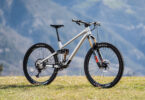First Ride: The all-new Canyon Strive CF 9.0 Race put to test
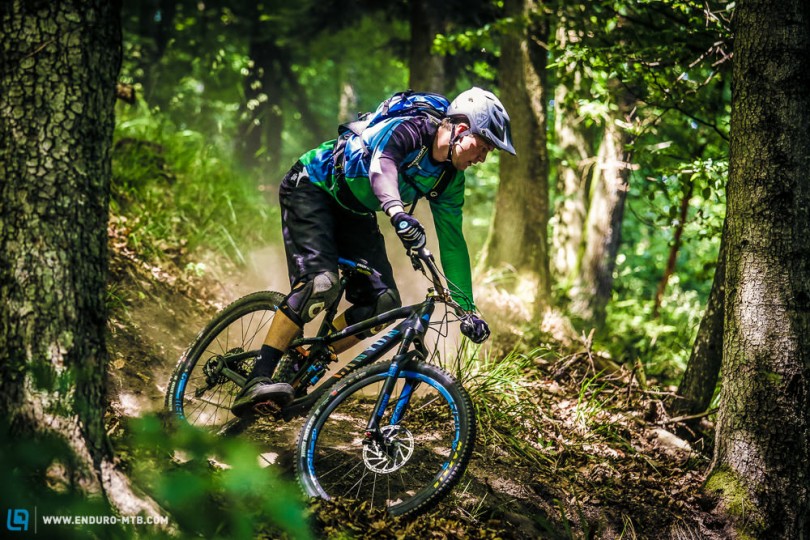

Having shown you the newly presented Canyon Strive CF with the clever Shapeshifter-Technology the big question was whether the claims Canyon make – that their new bike climbs like an XC bike and descends like a DH bike, are really true?
To find out we travelled to the Alsace to give the 4.299 Euro CF 9.0 Race a proper hard ride on the home trails of Enduro greats like Jerome Clementz and Nico Lau.
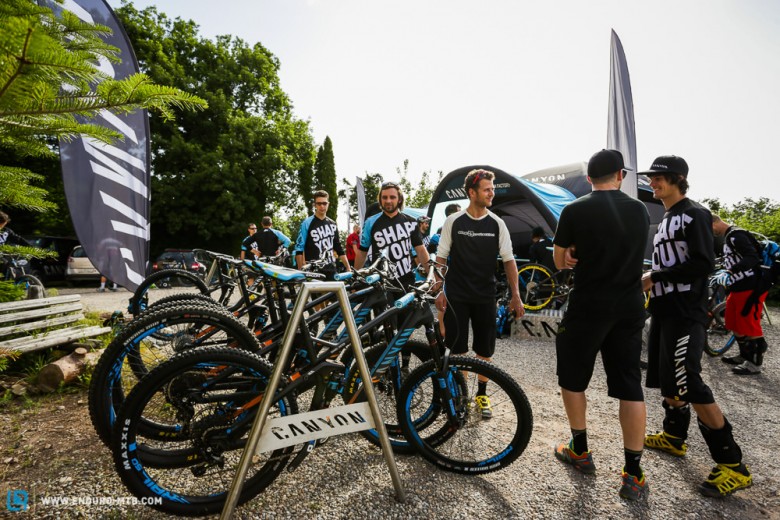
Before we hit the trails a full set-up was necessary and a few special steps need to be taken.
As the Shapeshifter-Technology is independent of the rear shock you have to decide which mode should have the optimum SAG. If you choose 25-30% SAG in the DH mode then the XC mode will only have 15% SAG due to the different leverage ratio rate. We naturally decided to optimise the rear suspension travel when riding in the DH mode.
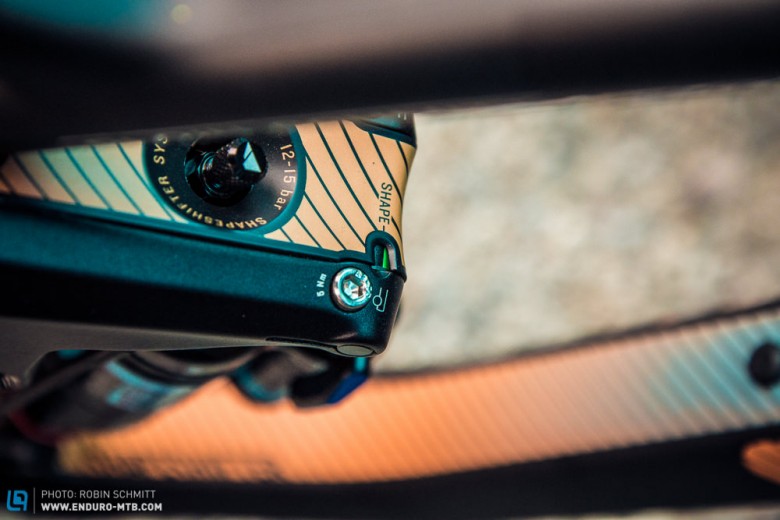
Because for Enduro-Racing and normal “trail blasting” what we really need is optimum suspension performance on the downhill, although a firmer XC mode makes complete sense for short, steep climbs. If riding long, epic XC rides (e.g. in the Alps) with little technical terrain and loads of climbs then switching to a SAG optimised in XC mode could make sense as 130mm of travel are plenty for this style of riding.
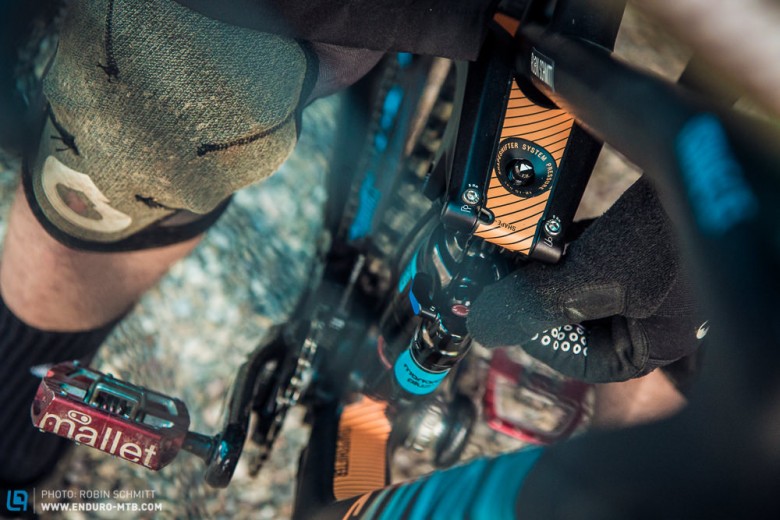
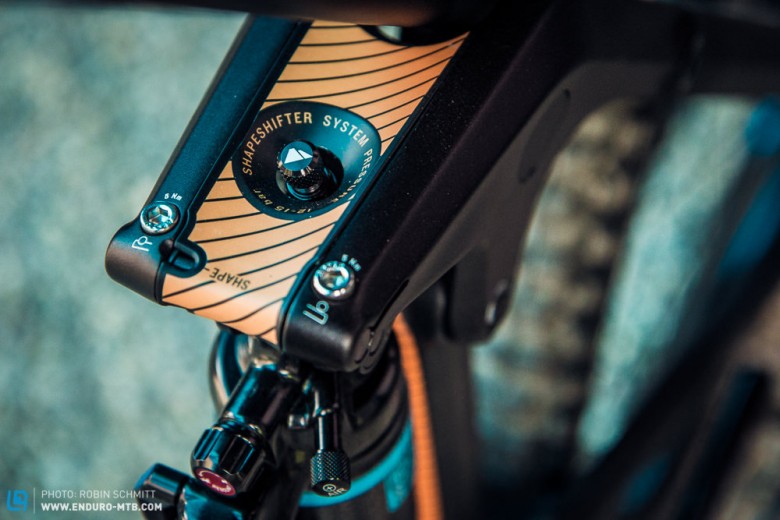
Set-up complete we get a short explanation of changing from XC to DH mode. Activating the bar remote just opens the system making an adjustment possible. The actual change is made through an active transfer of rider weight. Canyon explains the mode-shift process:

“When it comes to anything with two wheels, having a higher centre of gravity in relation to wheelbase is often seen as disadvantageous. With mountain bikes, this is particularly extreme as the rider forms the vast majority of the total weight and is positioned directly on top of the bike. Even the smallest movements from the rider have a major impact on overall balance. With Shapeshifter, this perceived disadvantage is exploited to benefit the rider.”
Shift to DH Mode
The rider holds down the remote while simultaneously shifting their weight towards the rear. With a quick pulse through the pedals the system shifts into DH mode. The resulting change in geometry turns the Strive CF into a mini DH bike.
Shift to XC Mode
Energy stored in the system is released when the rider pushes the remote again and shifts their weight towards the front of the bike. The result is a higher and more efficient riding position for sprinting, climbing and tackling rolling terrain.
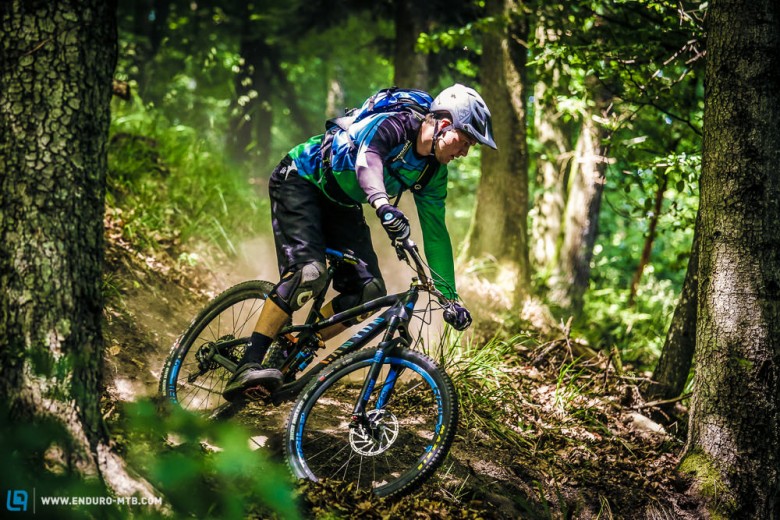
Equipped with this knowledge and after a few dry runs in the car park I can finally hit the trails. As I needed several attempts to manage the switch from DH to XC in the car park, we increased the pressure in the gas spring as this assists the transition.
The handling
Referring back to the geometry table confirmed the reality: the Strive CF 9.0 Race in size medium is pretty big (test rider was 185 cm tall). The 629 mm top tube and 1188 mm wheelbase make it feel like a downhill-bike – race ready! The rider position feels very central so that you feel integrated on the bike.
On uphills the 13kg carbon bike performed brilliantly with a powerful pedalling position. Even on the steepest gradients the front wheel stayed on the ground and felt stable. This is partly due to the 67,5° steep head angle and 75° steep seat angle. If you leave the compression adjustment of the RockShox Monarch Plus DebonAir open the bike climbs with a little bob, absolutely OK for us. We would only use a firmer setting of the 3-position compression lever for long fireroads or really steep ascents.
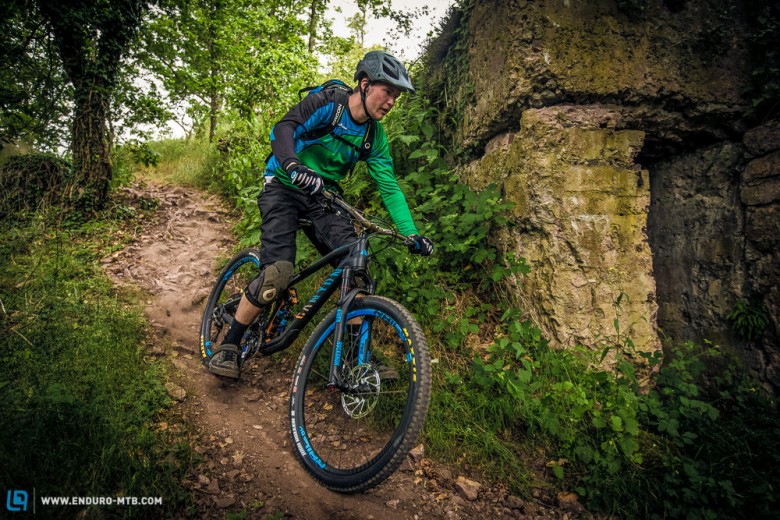
Arriving at the start of the trails proper we drop the saddle, change to a higher gear on the SRAM X01-drivetrain, and pressing the Shapeshifter shift our weight backwards – the DH mode is now activated.
Downhill with its long wheelbase the bike is stable and holds lines well. On fast, hard or steep descents the combination of the high front end and short stem offered great confidence. In really tight sections you’ll need quite a lot of pressure to push the bike through the turns. Thanks to the short chainstays it’s easy to get the bike up onto the back wheel and it has good agility. The weight distribution is well spread out and handling is always predictable. The 66° head angle creates a quiet front end without it feeling slow or too extreme in more moderate terrain.
But it’s quickly clear: the Strive CF 9.0 Race lusts after demanding trails and high-speed sections and it handles them with aplomb.

The plush 160mm rear travel in the DH mode sticks the bike firmly to the ground and it is happy to absorb impacts. A soft yet effective end-progression ensures that the whole travel is used yet still feels potent on tougher trails. The good news for racers: in the mid travel range the suspension feels very defined and never blows through, which on the one hand means it gives good feedback from the ground and on the other is precise and predictable if ridden actively. You won’t get any surprises on the Strive CF!
The spec is well thought through with no grounds for complaint. A dropper post with 150mm range would give more room to move about but the RockShox Reverb Stealth in 30.9mm diameter doesn’t offer this option.
For racers the big question is how the Shapeshifter-system works on-the-fly or during a stage. We can say that in general you can feel the mode switch on the trail with a clear click. Changing modes works well but requires getting used to until you’ve nailed the movements required, as you have to catch the perfect moment when the gas spring is fully extended or compressed.

Conclusion: the Strive CF 9.9 Race is an extremely interesting and (price-) aggressive bike. It offers excellent performance, low weight and great versatility. The Shapeshifter-Technology as a system independent of rear shock offers some clear advantages over other chassis and geometry adjustment technologies, as with one click the entire bike-characteristic can be changed. Even though the system has been conceived with maximum user-friendliness you’ll need good co-ordination and a certain adjustment phase before the body movements have become second nature.
If you’re not hunting for every second or not often riding extreme trails you should definitely try out the Strive CF with “regular” geometry! More info: www.canyon.com
Words & Photos: Robin Schmitt
Did you enjoy this article? If so, we would be stoked if you decide to support us with a monthly contribution. By becoming a supporter of ENDURO, you will help secure a sustainable future for high-quality mountain bike journalism. Click here to learn more.



